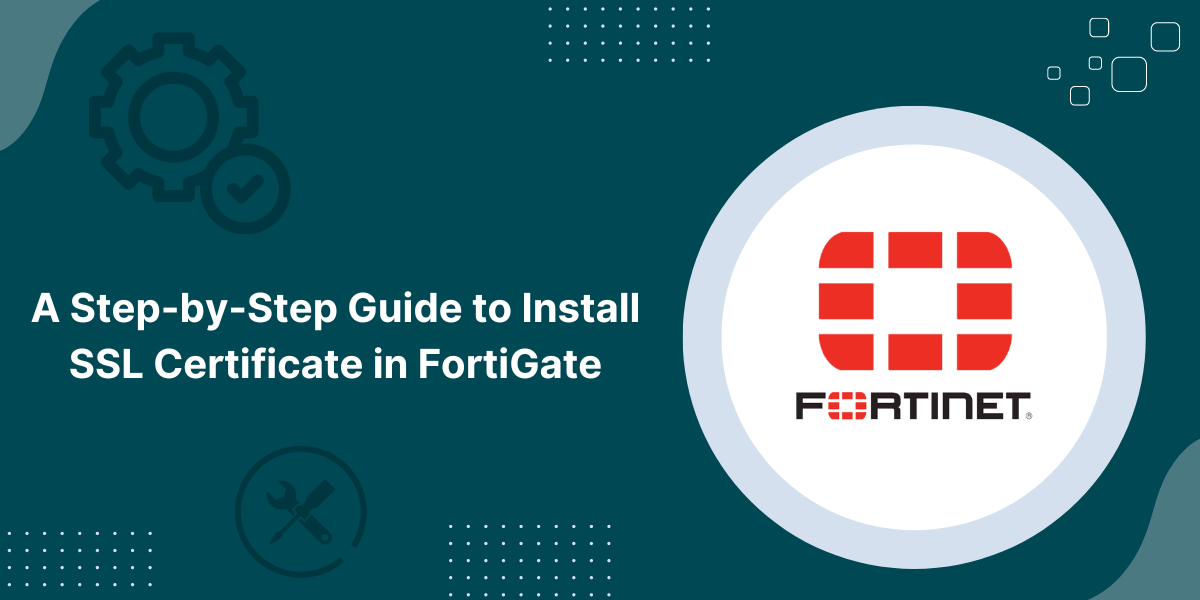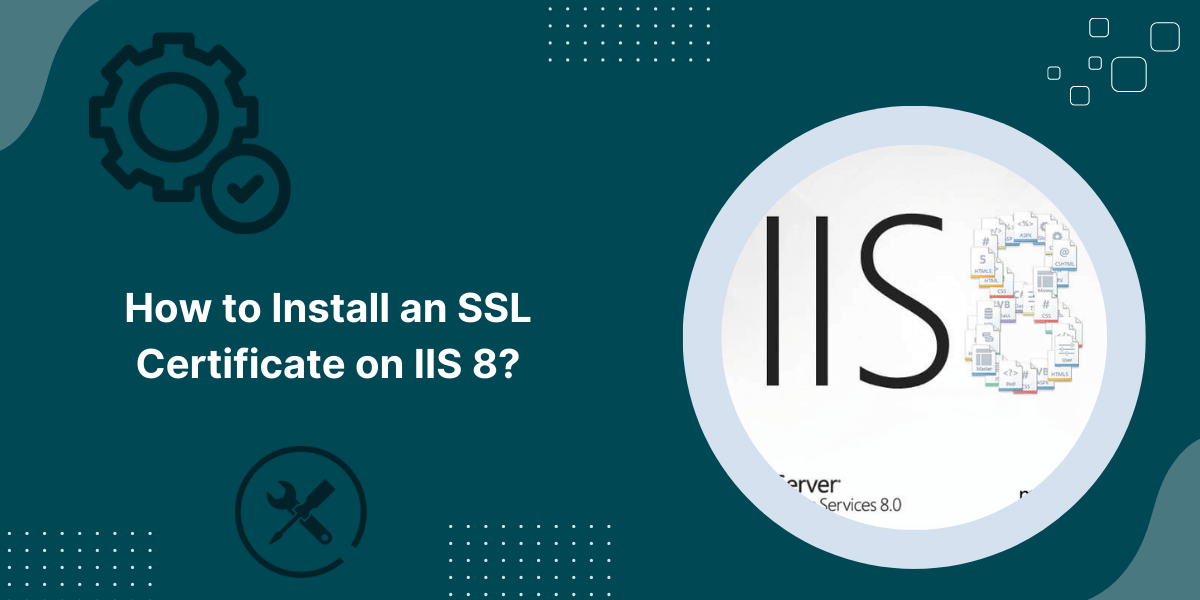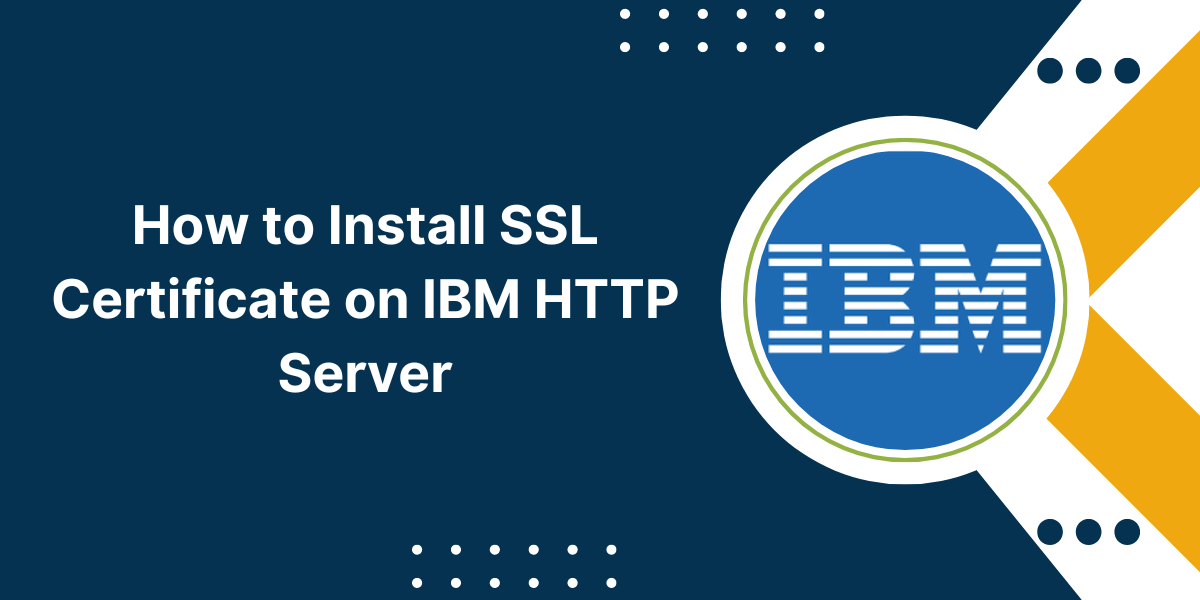FortiGate SSL Installation Guide with Easy Steps
FortiGate, a next-generation firewall and security appliance by Fortinet, offers robust SSL certificate management capabilities. Installing and configuring SSL certificates on your FortiGate appliance is a crucial step in safeguarding your network and web applications from potential threats and data breaches.
In this comprehensive guide, we will delve into the step-by-step process on how to Install SSL Certificate in FortiGate, covering various scenarios and configurations. Whether you’re a seasoned network administrator or new to the world of SSL, this article will equip you with the knowledge and skills necessary to securely deploy SSL certificates on your FortiGate firewall.
Key Takeaways on Install SSL Certificate in FortiGate
- SSL certificates are essential for securing data transmission and validating server identity.
- FortiGate offers powerful SSL certificate management capabilities.
- This guide covers the complete process of installing SSL certificates in FortiGate, including different scenarios and configurations.
- Proper SSL certificate installation and configuration are crucial for maintaining a secure network and protecting web applications.
Prerequisites Before Installing SSL Certificates in FortiGate
Before proceeding with the installation, ensure that you have the following:
- A valid SSL certificate file (.cer or .crt) from a trusted Certificate Authority (CA)
- The corresponding private key file (.key or .pem) for the SSL certificate
- If applicable, the intermediate CA certificate file(s) or chain file (.crt or .pem)
- Administrative access to the FortiGate web-based management interface or CLI
A Step-by-Step Guide to Install SSL Certificate in FortiGate
Follow these step-by-step guide to install SSL Certificate in FortiGate.
- Import the SSL Certificate and Key Files
- Assign the SSL Certificate to a Virtual Server
- Configure SSL Offloading (Optional)
- Test and Verify SSL Certificate Installation
Step 1: Import the SSL Certificate and Key Files
The first step in installing an SSL certificate on FortiGate is to import the certificate and key files into the FortiGate system.
- Log in to the FortiGate web-based management interface or CLI using your administrative credentials.
- Navigate to System> Certificates > Import > Local Certificate.
- In the “Import Certificate” section, provide the following information:
- Certificate Name: Enter a descriptive name for the SSL certificate.
- Certificate Source: Choose “Upload” or “File”.
- Certificate File: Click “Upload” and select the SSL certificate file (.crt or .cer) from your local file system.
- Key File: Click “Upload” and select the private key file (.key or .pem) for the SSL certificate.
- Password: If the private key file is password-protected, enter the password.
- (Optional) If you have an intermediate CA certificate file or a certificate chain file, you can upload it by clicking “Upload” in the “Certificate Intermediate CA Certificate” section.
- Click “OK” to import the SSL certificate and key files into the FortiGate system.
Step 2: Assign the SSL Certificate to a Virtual Server
After importing the SSL certificate, you need to assign it to a virtual server on your FortiGate appliance. This step ensures that the SSL certificate is applied to the appropriate web server or web application.
- Navigate to Policy & Objects> Virtual Servers.
- Locate the virtual server you want to configure with the SSL certificate, or create a new one if necessary.
- In the virtual server settings, navigate to the “SSL” section.
- Enable the “SSL Mode” and choose the appropriate mode (e.g., “Full” for end-to-end SSL encryption).
- In the “Certificate” field, select the SSL certificate you imported in Step 1.
- (Optional) Configure additional SSL settings as needed, such as SSL ciphers, SSL protocols, and SSL server options.
- Click “OK” to apply the changes and associate the SSL certificate with the virtual server.
Step 3: Configure SSL Offloading (Optional)
FortiGate supports SSL offloading, which allows the firewall to handle SSL/TLS encryption and decryption, offloading the processing burden from the backend servers. This feature can improve performance and reduce the load on your web servers.
To configure SSL offloading, follow these steps:
- Navigate to Policy & Objects> Virtual Servers.
- Locate the virtual server you want to configure for SSL offloading or create a new one.
- In the virtual server settings, navigate to the “Server Load Balance” section.
- Enable the “SSL Mode” and choose “SSL Offloading” or “Full SSL Offloading”.
- (Optional) Configure additional SSL offloading settings as needed, such as SSL ciphers, SSL protocols, and SSL server options.
- Click “OK” to apply the changes and enable SSL offloading for the virtual server.
Step 4: Test and Verify SSL Certificate Installation
After completing the installation and configuration steps, it’s crucial to test and verify that the SSL certificate is properly installed and functioning as intended.
- Open a web browser and navigate to the website or web application secured by the SSL certificate.
- Check if the padlock icon or security indicator in the browser’s address bar is displayed, confirming that the SSL certificate is installed correctly.
- (Optional) Click on the padlock icon or security indicator to view the SSL certificate details and ensure that the information matches the SSL certificate you installed.
- (Optional) Use online SSL testing tools or services to check the SSL configuration and verify that the certificate is valid and properly configured.
If you encounter any issues or errors during the testing process, review the installation steps and ensure that the SSL certificate and key files are correctly imported and assigned to the appropriate virtual server.
Advanced SSL Certificate Management
In addition to the basic installation process, FortiGate offers advanced SSL certificate management features to enhance security and streamline certificate lifecycle management.
SSL Certificate Backup and Restoration
To back up an SSL certificate on FortiGate, follow these steps:
- Log in to the FortiGate web-based management interface or CLI.
- Navigate to System> Certificates > Local Certificates.
- Select the SSL certificate you want to back up and click the “Export” button.
- Choose the export format (e.g., Certificate (.cer), Certificate and Key (.p12), or PKCS12 (.p12)).
- Provide a password if prompted and click “OK” to download the certificate backup file.
To restore an SSL certificate from a backup, follow these steps:
- Log in to the FortiGate web-based management interface or CLI.
- Navigate to System> Certificates > Import > Local Certificate.
- In the “Import Certificate” section, choose the appropriate certificate source (e.g., “Upload” or “File”).
- Click “Upload” and select the certificate backup file you want to restore.
- Enter the password if required and click “OK” to import the SSL certificate.
SSL Certificate Renewal and Replacement
SSL certificates have an expiration date, and it’s essential to renew them before they expire to maintain secure communication and avoid potential service disruptions. FortiGate simplifies the process of renewing and replacing SSL certificates.
To renew an SSL certificate on FortiGate, follow these steps:
- Obtain a new SSL certificate from a reputed Certificate Authority (CA).
- Log in to the FortiGate web-based management interface or CLI.
- Navigate to System> Certificates > Local Certificates.
- Locate the SSL certificate you want to replace and click the “Import” button.
- In the “Import Certificate” section, provide the necessary information for the new SSL certificate, including the certificate name, certificate file, and key file.
- (Optional) If applicable, upload the intermediate CA certificate file or certificate chain file.
- Click “OK” to import the new SSL certificate and replace the existing one.
- After importing the new SSL certificate, remember to assign it to the appropriate virtual server(s) by following the steps outlined in “Step 2: Assign the SSL Certificate to a Virtual Server”.
SSL Certificate Monitoring and Notifications
FortiGate provides monitoring and notification capabilities to help you stay informed about the status and expiration dates of your SSL certificates. This feature ensures that you are aware of upcoming certificate expirations and can take timely action to renew or replace the certificates.
To configure SSL certificate monitoring and notifications on FortiGate, follow these steps:
- Log in to the FortiGate web-based management interface or CLI.
- Navigate to System> Certificates > Certificate Monitor.
- Enable the “Certificate Monitor” option.
- Set the “Monitoring Interval” to specify how often FortiGate should check the validity and expiration status of the SSL certificates.
- Configure the notification settings, such as the email address(es) to receive expiration alerts and the notification threshold (e.g., 30 days before expiration).
- Click “OK” to save the certificate monitoring and notification settings.
With certificate monitoring enabled, FortiGate will periodically check the validity and expiration status of your SSL certificates and send notifications based on the configured settings, allowing you to proactively manage and renew expiring certificates.
Troubleshooting SSL Certificate Issues
Despite following the correct installation and configuration steps, you may encounter issues or errors related to SSL certificates on your FortiGate appliance. Here are some common troubleshooting steps and tips:
SSL Certificate Error Messages
If you receive error messages or warnings related to SSL certificates, carefully review the error message, and take the appropriate action. Common error messages may include:
- Certificate expired: This indicates that the SSL certificate has reached its expiration date and needs to be renewed or replaced.
- Certificate not yet valid: This error occurs when you attempt to use an SSL certificate before its valid start date.
- Certificate revoked: This means that the SSL certificate has been revoked by the issuing Certificate Authority (CA), and you need to obtain a new certificate.
- Certificate chain incomplete: This error suggests that the intermediate CA certificate(s) or certificate chain is missing or incomplete, and you need to install the missing certificate(s).
SSL Certificate Verification and Troubleshooting Tools
To troubleshoot SSL certificate issues, you can use various online tools and utilities that can analyze and validate your SSL certificate configuration. Here are some helpful tools:
- SSL Server Test (Qualys SSL Labs): This online tool provides a comprehensive analysis of your SSL configuration, including certificate validation, cipher suite support, and protocol support.
- SSL Checker: Free SSL Checker tool allows you to check the validity and details of your SSL certificate, as well as identify potential issues.
- SSL/TLS Capabilities Tester (SSL Labs): This tool tests the SSL/TLS capabilities of your server and identifies any weaknesses or vulnerabilities in your SSL/TLS configuration.
SSL Certificate Logs and Debugging
FortiGate provides detailed logging and debugging capabilities that can help you identify and resolve SSL certificate-related issues. Here’s how you can access and analyze these logs:
- Log in to the FortiGate web-based management interface or CLI.
- Navigate to Log & Report> Log Settings.
- Enable the “SSL VPN Log” and set the desired log level (e.g., “Debug” for detailed logging).
- Navigate to Log & Report> View Logs.
- Filter the logs by selecting the “SSL VPN” event log type.
- Review the logs for any error messages or relevant information related to your SSL certificate issue.
Additionally, you can enable debug mode on FortiGate to capture more detailed information and debug logs. However, it’s recommended to use debug mode judiciously and only, when necessary, as it can generate a significant amount of log data and potentially impact system performance.
Best Practices for SSL Certificate Management
To ensure optimal security and reliability when using SSL certificates with FortiGate, it’s essential to follow best practices for certificate management. Here are some recommended practices:
Use Trusted Certificate Authorities (CAs)
Always obtain SSL certificates from reputable and trusted Certificate Authorities (CAs). Well-known CAs have stringent validation processes and adhere to industry standards, ensuring the integrity and trustworthiness of the issued certificates.
Keep SSL Certificates Up-to-Date
SSL certificates have expiration dates, and it’s crucial to renew them before they expire. Implement a process to monitor and track certificate expiration dates and promptly renew or replace expiring certificates to avoid service disruptions and potential security risks.
Implement SSL Certificate Backup and Restoration Procedures
Regularly back up your SSL certificates and private keys to ensure business continuity in case of system failures or data loss. Establish a secure and reliable backup process, and test the restoration procedures periodically to ensure their effectiveness.
Utilize SSL Certificate Monitoring and Notifications
Take advantage of FortiGate’s built-in certificate monitoring and notification features to stay informed about the status and expiration dates of your SSL certificates. Configure appropriate notification thresholds and recipients to receive timely alerts and take necessary actions.
Follow Security Best Practices
Implement security best practices when managing SSL certificates, such as:
- Restricting access to SSL certificate files and private keys to authorized personnel only.
- Storing private keys securely and never sharing them with unauthorized parties.
- Regularly updating and patching FortiGate firmware and software to address security vulnerabilities.
- Enabling SSL offloading and other SSL-related security features as needed.
Regularly Review and Audit SSL Certificate Configuration
Periodically review and audit your SSL certificate configuration on FortiGate to ensure compliance with security policies and industry best practices. Identify and address any potential vulnerabilities or misconfigurations promptly.
By following these best practices, you can enhance the security and reliability of your SSL certificate deployment on FortiGate, protecting your network and web applications from potential threats and ensuring a secure and trusted connection for your users.
Conclusion on Install SSL Certificate on FortiGate
In conclusion, installing SSL certificates on your FortiGate firewall is a crucial step in securing your network and web applications. By following the step-by-step guide outlined in this article, you can ensure that your SSL certificates are properly installed, configured, and managed. Remember to implement best practices, such as using trusted Certificate Authorities, keeping certificates up to date, implementing backup and restoration procedures, and enabling SSL offloading for improved performance.
With the right SSL certificate management strategies in place, you can safeguard your data transmission, validate server identity, and maintain a secure and trusted connection for your users. Stay vigilant, and regularly review your SSL certificate configuration to maintain optimal security and compliance.
FAQs About Install SSL Certificate in FortiGate
Here are some frequently asked questions related to installing SSL certificates in FortiGate:
Can I install multiple SSL certificates on a single FortiGate appliance?
Yes, FortiGate supports installing and managing multiple SSL certificates on a single appliance. You can import and assign different SSL certificates to different virtual servers or web applications as per your requirements.
Do I need to install intermediate CA certificates when importing SSL certificates on FortiGate?
In most cases, you will need to install the intermediate CA certificate(s) or certificate chain along with the SSL certificate and private key. This ensures that the entire certificate chain is trusted and validated correctly.
What types of SSL certificates can I use with FortiGate?
FortiGate supports various types of SSL certificates, including Domain Validated (DV), Organization Validated (OV), Extended Validation (EV), Wildcard, and Multi-Domain (SAN/UCC) certificates. The choice depends on your organization’s requirements, budget, and the level of trust and validation you wish to convey.
How do I import an SSL certificate chain or intermediate CA certificates in FortiGate?
When importing an SSL certificate in FortiGate, you have the option to upload the intermediate CA certificate file or certificate chain file along with the SSL certificate and private key. This ensures that the entire certificate chain is trusted and validated correctly.
Can I use a free or self-signed SSL certificate with FortiGate?
While it is possible to use self-signed SSL certificates with FortiGate, it is generally not recommended for production environments. Self-signed certificates are not trusted by default and will generate security warnings. It is strongly recommended to use SSL certificates issued by a trusted Certificate Authority (CA) for optimal security and compatibility.
How can I check if my SSL certificate is about to expire on FortiGate?
FortiGate provides a certificate monitoring feature that allows you to track the expiration dates of your SSL certificates. You can configure email notifications to be sent when certificates are approaching their expiration dates, giving you ample time to renew or replace them.
Can I use the same SSL certificate for multiple virtual servers in FortiGate?
Yes, you can assign the same SSL certificate to multiple virtual servers in FortiGate. However, it’s important to ensure that the SSL certificate’s domain or hostname matches the virtual servers’ configurations to avoid potential compatibility issues.
How can I troubleshoot SSL certificate errors or issues in FortiGate?
To troubleshoot SSL certificate issues in FortiGate, you can review the SSL VPN logs, enable debug mode for detailed logging, and use online SSL testing tools like SSL Server Test (Qualys SSL Labs) or SSL Checker (DigiCert) to analyze and validate your SSL configuration.
What are the benefits of enabling SSL offloading in FortiGate?
Enabling SSL offloading in FortiGate can improve performance by offloading the SSL/TLS encryption and decryption tasks from the backend servers to the FortiGate appliance. This can reduce the processing load on your web servers and potentially improve overall system performance.



